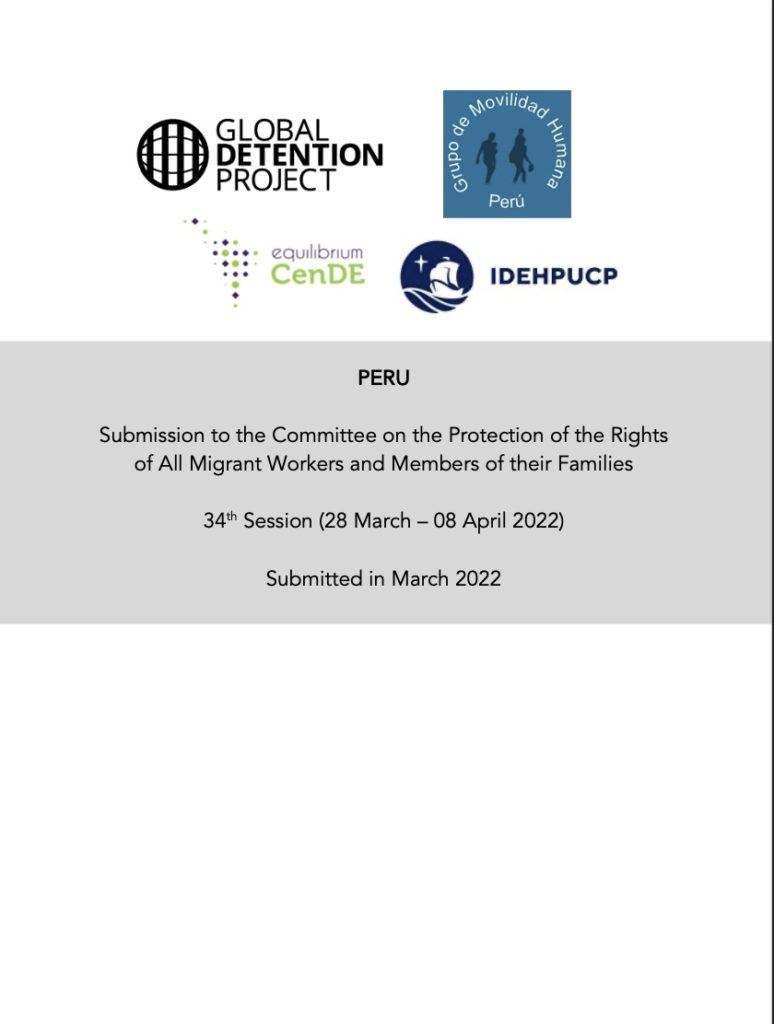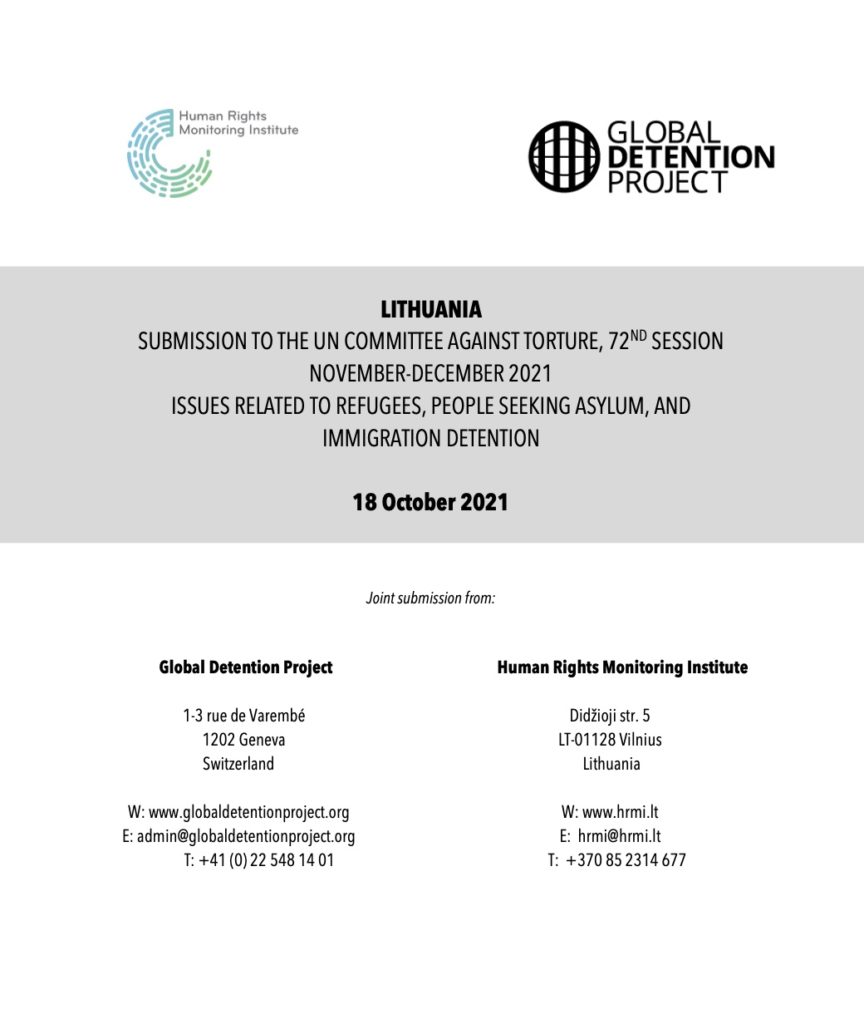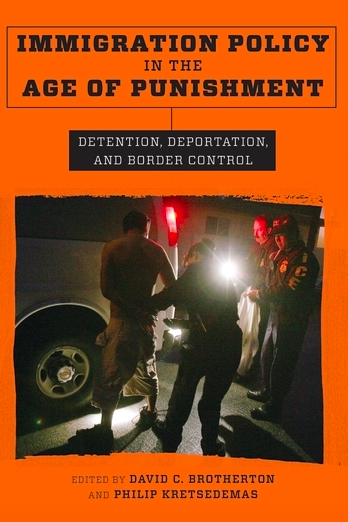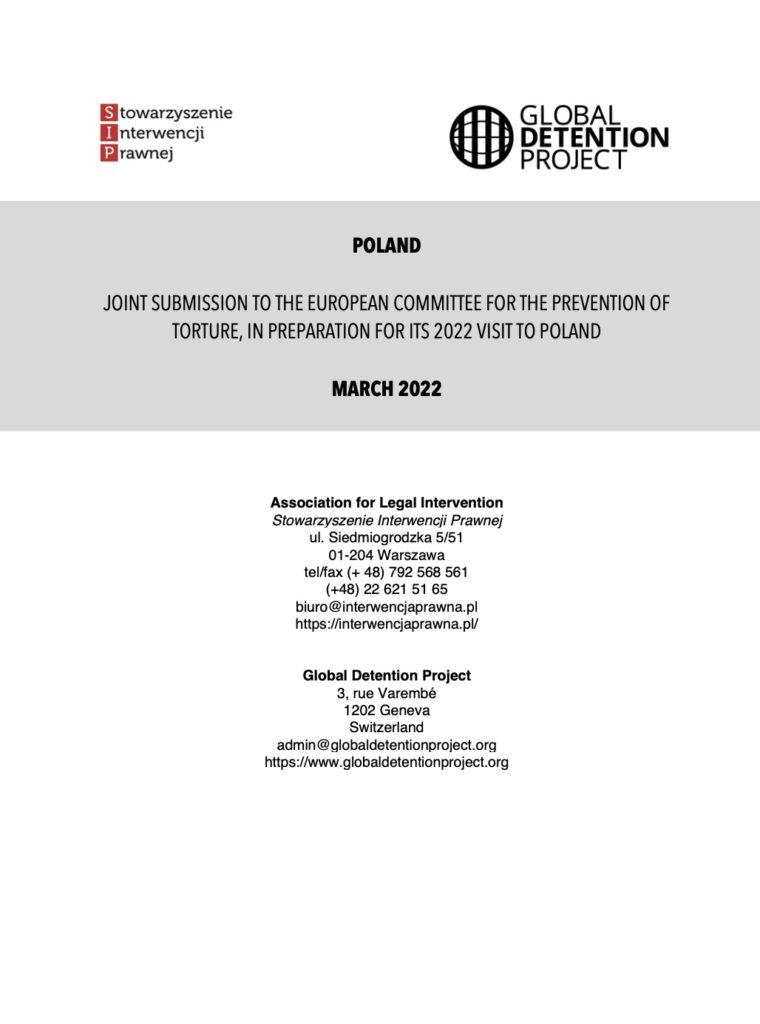The submission highlights concerns regarding Poland’s discriminatory detention practices of non-Ukrainian refugees, inhuman and degrading conditions in “Guarded Centres for Foreigners,” abuses of non-citizens on the border with Belarus, and the country’s increasing detention of children for migration purposes. […]
Border Control
PERU: Submission to the Committee on the Protection of the Rights of All Migrant Workers and Members of their Families
In their joint submission to the UN Committee on Migrant Workers concerning the upcoming report on Peru, the Global Detention Project and the Grupo de Movilidad Humana de la Coordinadora Nacional de Derechos Humanos highlight concerns regarding Peru’s militarisation of border controls, which have become more severe since the onset of the COVID-19 pandemic, and point […]

Joint Submission to the Committee against Torture: Lithuania
This submission highlights Lithuania’s treatment of migrants and asylum seekers in response to recent increases in border crossings from Belarus, which has included stranding vulnerable people–including children–in dire conditions in border regions, using ad hoc detention sites, and expanding detention powers. Testimonies provided by detainees include numerous allegations of torture and mistreatment by security officials. […]

Critiquing Zones of Exception: Actor-Oriented Approaches Explaining the Rise of Immigration Detention
Immigration policy has catapulted to the forefront of public debate around the world as governments resort to increasingly restrictive measures to block migrants and refugees. While severe border policies are by no means new, this surge in migration control raises questions about the forces driving national policies. This chapter in the new book Immigration Policy in the Age of Punishment advances an actor-oriented analysis that views detention systems as complex organisations that rely on deeply rooted institutional structures to buttress their existence, multiple sources of financing to grow operations, and support from a broad array of social actors. […]




